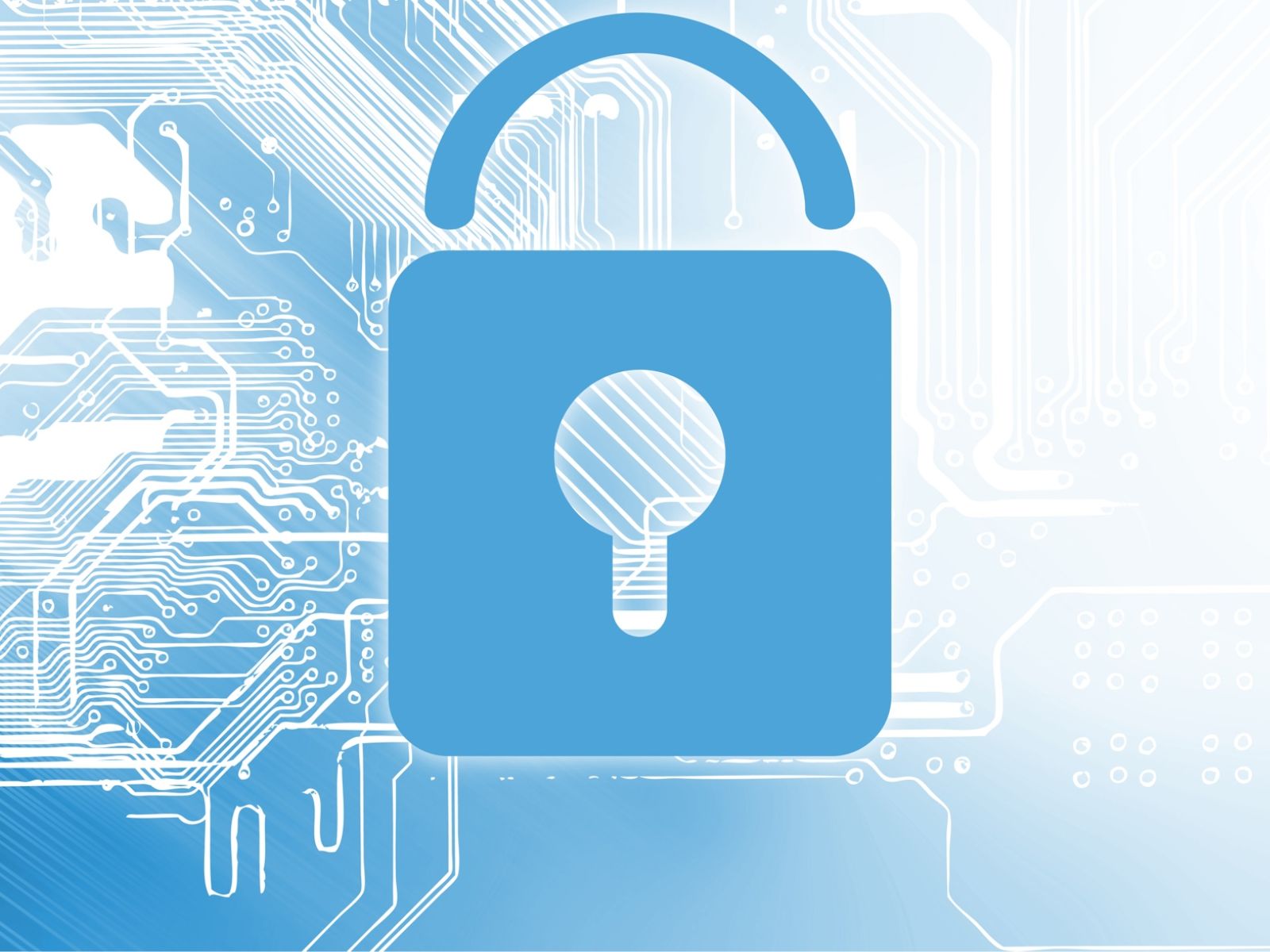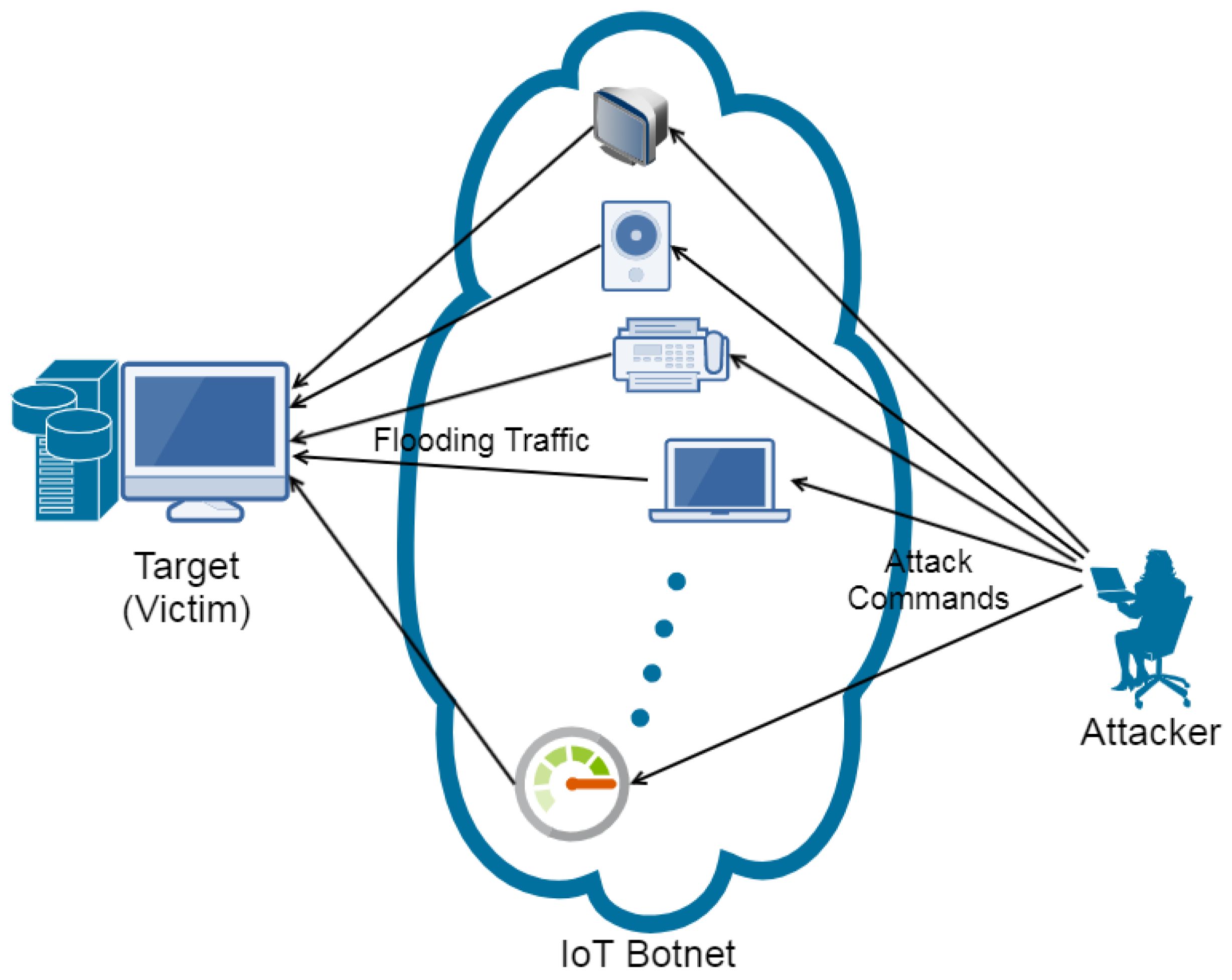Introduction
The Internet of Things (IoT) has revolutionized the way we live and interact with technology. From smart homes and wearable devices to industrial automation and healthcare systems, IoT devices have become an integral part of our everyday lives. However, along with the numerous advantages they offer, IoT devices also pose significant security risks.
IoT devices are vulnerable to a wide range of cybersecurity threats due to the inherent design and implementation challenges they face. These vulnerabilities expose users to potential privacy breaches, data theft, and even physical harm. It is crucial to understand the underlying reasons why IoT devices are so susceptible to attacks in order to mitigate these risks and ensure a safer digital environment.
In this article, we will explore the key factors that contribute to the vulnerability of IoT devices. Understanding these issues will empower users and manufacturers to implement effective security measures and safeguard against potential threats.
Lack of Security Awareness:
…
Insufficient Physical Security Measures:
…
By addressing these vulnerabilities and implementing robust security practices, we can enhance the protection of IoT devices, safeguard user data, and create a more secure IoT ecosystem. Through increased security awareness, stronger authentication and authorization protocols, regular updates, and improved physical security measures, we can make significant strides in reducing the risks associated with IoT devices.
Lack of Security Awareness
One of the significant reasons why IoT devices are vulnerable to security breaches is the lack of awareness among users about the potential risks. Many people are unaware of the security implications associated with IoT devices or underestimate their significance.
Users often fail to implement basic security practices, such as changing default usernames and passwords or keeping their devices’ firmware up to date. They may overlook the need to secure their networks or ignore the importance of encrypting data transmitted between IoT devices and the cloud. This lack of security awareness leaves IoT devices vulnerable to attacks by cybercriminals.
Additionally, manufacturers may not prioritize security education and awareness in their product documentation and user manuals. Users may not have access to clear and concise instructions on how to secure their devices or may not fully understand the potential risks.
To address this issue, it is essential to promote security awareness among users, both through educational campaigns and transparent documentation. Users should be educated about the potential risks, best security practices, and the importance of regularly updating their devices’ firmware.
By imparting security knowledge and encouraging responsible device usage, users can make informed decisions and take proactive measures to protect their IoT devices from potential threats.
Inadequate Authentication and Authorization
Inadequate authentication and authorization mechanisms are another major factor contributing to the vulnerability of IoT devices. Weak or easily guessable passwords, lack of two-factor authentication, and insufficient user permission controls leave devices susceptible to unauthorized access and data breaches.
Many IoT devices come with default usernames and passwords that are widely known or easily discoverable, making it effortless for attackers to gain access. Users often neglect to change these defaults, leaving their devices open to exploitation.
Moreover, some IoT devices lack robust authentication protocols, relying solely on basic username-password combinations. This makes it easier for attackers to launch brute-force attacks or exploit vulnerabilities in the authentication process to gain unauthorized access to the device.
Another concern is the inadequate user permission controls in IoT devices. Users should have the ability to grant different levels of access to various users and restrict certain functionalities and privileges. Without proper authorization mechanisms, unauthorized users can gain control over the device, manipulate its operations, and potentially compromise the entire network.
To improve IoT device security, manufacturers and users should prioritize strong authentication mechanisms and proper authorization controls. This includes implementing complex, unique passwords, enabling two-factor authentication, and providing users with the ability to customize access permissions for different users or applications.
By implementing these measures, IoT devices can be better protected against unauthorized access, reducing the risk of data breaches and ensuring that only authorized individuals can interact with the devices.
Vulnerabilities in Firmware and Software
Firmware and software vulnerabilities pose significant risks to the security of IoT devices. These vulnerabilities can be exploited by attackers to gain unauthorized access to the device, compromise its functionality, or steal sensitive data.
One of the main challenges is the lack of rigorous security testing and vulnerability assessments during the development of IoT firmware and software. Due to time constraints or a lack of security expertise, manufacturers may not thoroughly evaluate their code for potential vulnerabilities, leaving weaknesses that can be exploited by attackers.
Additionally, IoT devices often rely on outdated or poorly maintained software components, such as operating systems, libraries, or application frameworks. These components may have known vulnerabilities that can be exploited by attackers who are aware of the weaknesses.
Another common issue is the inability to apply timely patches and updates to IoT devices. Many devices lack automatic update mechanisms or do not prompt users to install available patches. As a result, known vulnerabilities remain unaddressed, leaving devices exposed to exploit even when security fixes are available.
To mitigate these risks, it is crucial for manufacturers to prioritize security in the development lifecycle of IoT devices. Thorough security testing should be conducted on firmware and software to identify and address vulnerabilities. Regular updates and patches should also be provided to users, ensuring devices have the latest security fixes.
Furthermore, manufacturers should prioritize the use of secure coding practices and implement mechanisms for secure over-the-air updates, allowing devices to be patched and updated remotely.
By addressing vulnerabilities in firmware and software, manufacturers can significantly reduce the risk of attackers exploiting weaknesses in IoT devices, thereby enhancing device security and protecting against potential breaches.
Insufficient Encryption and Data Privacy
Insufficient encryption and data privacy practices are significant vulnerabilities that expose IoT devices and their users to the risk of unauthorized access, data breaches, and privacy violations.
Many IoT devices transmit data over networks without adequate encryption. This means that the information exchanged between the device and the cloud or other connected devices can be intercepted and deciphered by attackers. Without proper encryption measures, sensitive data such as personal information, financial details, or confidential business data can be compromised.
Furthermore, some IoT devices may collect and store large amounts of data without implementing appropriate privacy measures. Users may not be aware of the types of data being collected or how it is being used, putting their privacy at risk. In cases where data is transmitted to third-party servers or shared with other devices, the lack of transparency regarding data sharing practices raises concerns about privacy and user consent.
To address these vulnerabilities, manufacturers must prioritize end-to-end encryption for data transmitted between IoT devices and the cloud. This ensures that even if the data is intercepted, it remains unreadable and inaccessible to unauthorized individuals.
Manufacturers should also provide clear and concise privacy policies that outline what data is collected, how it is used, and who has access to it. Users should have the ability to control and manage their data, including the option to delete or anonymize it if desired.
By implementing strong encryption protocols and transparent data privacy practices, IoT devices can better protect sensitive information and respect users’ privacy rights.
Weak Default Settings and Passwords
Weak default settings and passwords are a common security vulnerability in IoT devices that can be easily exploited by attackers. Many manufacturers ship their devices with generic, widely known default settings and passwords, which are intended for initial setup but are often not changed by users.
Attackers are aware of these default settings and passwords, making it easy for them to gain unauthorized access to vulnerable devices. Once inside, they can manipulate device settings, compromise user privacy, or use the device as a jumping-off point to launch attacks on other devices in the network.
Additionally, users often choose weak passwords or reuse the same passwords across multiple devices, leaving them vulnerable to credential stuffing attacks. Attackers can use automated scripts to systematically try common passwords or leaked password databases, gaining unauthorized access to IoT devices.
To address this issue, both manufacturers and users must take responsibility. Manufacturers should implement more secure default settings and unique, randomly generated passwords for each device. They should also educate users about the importance of changing default settings and passwords during initial setup.
Users, on the other hand, must be proactive in changing default settings and implementing strong, unique passwords for their IoT devices. Using a combination of uppercase and lowercase letters, numbers, and special characters can significantly enhance password strength. Additionally, implementing password managers can help users generate and securely store complex passwords.
Regularly updating passwords is also crucial. Users should change their passwords periodically and avoid reusing the same password across multiple devices or platforms.
By ensuring strong default settings and passwords, both manufacturers and users can significantly reduce the risk of unauthorized access to IoT devices, protecting user privacy and preventing potential security breaches.
Lack of Regular Updates and Patches
The lack of regular updates and patches for IoT devices is a significant security concern. Many manufacturers do not prioritize or provide ongoing support for their devices, leaving them vulnerable to known vulnerabilities that can be exploited by attackers.
Software vulnerabilities are discovered and reported regularly, and security patches are released to address these vulnerabilities. However, IoT devices often lack mechanisms for automatic updates or fail to notify users about available patches. As a result, devices may remain unpatched and exposed to known security flaws.
Furthermore, IoT devices may have long lifecycles, meaning they are used for many years without receiving updates or security patches. During this time, new vulnerabilities may arise, making the devices increasingly susceptible to attacks.
Another challenge is the lack of a standardized update process across different IoT devices. Each device may require a unique update process, which can be cumbersome and confusing for users. This can lead to devices being left unpatched, as users may not be aware of the required steps or may find the process too complex.
To address these concerns, manufacturers should prioritize regular security updates and patches for their IoT devices. This includes implementing mechanisms for automatic updates or providing clear instructions to users on how to manually apply patches.
Users, in turn, must be vigilant in ensuring their devices are up to date with the latest security patches. They should regularly check for updates and follow the instructions provided by the device manufacturer to install them.
Furthermore, industry collaboration is essential to establish standardized processes for updates and patches across different IoT devices. This will simplify the update process for users and ensure that devices receive necessary security updates in a timely manner.
By addressing the lack of regular updates and patches, IoT devices can remain protected against known vulnerabilities, reducing the risk of potential security breaches and enhancing overall device security.
Lack of Network Segmentation
The lack of network segmentation is a critical security weakness in IoT devices that can have severe consequences. Many users connect their IoT devices to the same network as their computers, smartphones, and other devices, creating a single point of vulnerability.
If an attacker gains access to one device within the network, they can potentially compromise all connected devices, including IoT devices. This puts sensitive data, personal information, and even physical safety at risk.
Without proper network segmentation, attackers can exploit vulnerabilities in one device to gain unauthorized access to others. For example, if a laptop connected to the same network as an IoT device is compromised, the attacker can use it as a launching pad to attack and compromise the connected IoT device.
Implementing network segmentation is a crucial step in enhancing IoT device security. This involves creating separate network segments or virtual LANs (VLANs) for IoT devices, isolating them from other devices on the network. Each VLAN can then be configured with its own security policies and access controls.
By segregating IoT devices from other devices on the network, even if one device is compromised, it will be difficult for the attacker to move laterally and access other devices. This adds an extra layer of security and minimizes the potential damage that can be caused by a single device compromise.
Manufacturers should prioritize providing built-in network segmentation capabilities in their IoT devices, enabling users to easily configure separate VLANs for their devices. Additionally, manufacturers should educate users about the importance of network segmentation and provide clear instructions on how to set it up securely.
Users, on the other hand, should take the necessary steps to implement network segmentation for their IoT devices. This may involve configuring their routers or network switches to create separate VLANs and ensuring that proper access controls and security policies are in place.
By implementing network segmentation, IoT devices can be better protected from unauthorized access and reduce the potential impact of a security breach on the entire network.
Backdoor Exploits and Hidden Vulnerabilities
Backdoor exploits and hidden vulnerabilities are significant security risks that can compromise the integrity and security of IoT devices. These vulnerabilities can be intentionally or unintentionally built into the devices, providing unauthorized access points for attackers.
Backdoors, which are hidden entry points intentionally created by manufacturers or developers, can be exploited by attackers to bypass security mechanisms and gain unauthorized access to IoT devices. These backdoors may exist due to debugging purposes, remote access for maintenance and support, or even as deliberate malicious backdoors.
Hidden vulnerabilities, on the other hand, can result from coding errors, oversight, or lack of rigorous security testing during device development. These vulnerabilities may not be immediately apparent, making it difficult for manufacturers or users to detect and address them.
Attackers can exploit these backdoors and hidden vulnerabilities to gain unauthorized access to IoT devices, manipulate their operations, steal sensitive data, or use them as entry points to launch wider attacks on the network.
To mitigate these risks, manufacturers must prioritize robust security testing during the development process to identify and address backdoors and hidden vulnerabilities. Regular code reviews, penetration testing, and vulnerability assessments should be conducted to identify and fix these issues before devices reach the market.
Additionally, manufacturers should provide mechanisms for regular device firmware updates to address any discovered vulnerabilities or backdoors post-purchase. Users should be promptly notified of these updates and encouraged to install them to ensure the latest security fixes are implemented.
Open communication between manufacturers and the security community is crucial in identifying and addressing backdoors and hidden vulnerabilities once they are discovered. Manufacturers should be receptive to bug reports and security disclosures, actively working to address any identified vulnerabilities or backdoors in a timely manner.
Users, on their part, should remain vigilant and keep their devices updated with the latest firmware versions provided by the manufacturer. They should also report any suspected vulnerabilities or backdoors to the manufacturer or relevant security organizations.
By addressing backdoor exploits and hidden vulnerabilities, manufacturers can enhance the security of their IoT devices, and users can reduce the risk of unauthorized access and protect their data and privacy.
Insufficient Physical Security Measures
Insufficient physical security measures can leave IoT devices vulnerable to physical tampering and unauthorized access, compromising their overall security. While much emphasis is placed on digital security, physical security is equally important in protecting IoT devices, especially those deployed in public spaces or industrial settings.
One of the common physical security weaknesses is the lack of secure enclosures or tamper-proof designs for IoT devices. Devices without proper enclosures can be easily tampered with or damaged, allowing attackers to gain access to internal components or manipulate device operations.
Additionally, exposed ports or easily accessible interfaces on devices can provide unauthorized individuals with opportunities to connect to the device or tamper with its functionalities. These physical access points should be adequately protected to prevent unauthorized access.
Another concern is the lack of proper access control mechanisms. Physical access to devices should be strictly controlled, with limited access granted only to authorized personnel. Unauthorized individuals gaining physical access to IoT devices can compromise their security, install malware, or extract sensitive data from them.
Furthermore, IoT devices that are not properly secured in terms of physical placement, such as being left unattended or with unsecured wiring, are at a higher risk of theft or damage. This not only compromises the devices themselves but also exposes the data they collect or transmit to potential breaches.
To address these vulnerabilities, manufacturers should prioritize the implementation of secure physical enclosures for their IoT devices. These enclosures should be designed to resist tampering, protect against physical damage, and prevent unauthorized access to internal components and ports.
Strict access control policies and mechanisms should be implemented to ensure that only authorized personnel can physically interact with the devices. This can include techniques such as biometric authentication, keycard access, or secure locking mechanisms.
Additionally, users should follow best practices in physically securing their IoT devices. They should place devices in secure locations, ensure proper storage and cable management, and report any suspected physical tampering to the appropriate authorities or device manufacturers.
By prioritizing physical security measures, both manufacturers and users can enhance the overall security of IoT devices, protecting them from unauthorized access, tampering, and physical damage.
Conclusion
The vulnerability of IoT devices to security breaches is a pressing concern that must be addressed to ensure a safer digital environment. The lack of security awareness among users, inadequate authentication and authorization mechanisms, vulnerabilities in firmware and software, insufficient encryption and data privacy practices, weak default settings and passwords, lack of regular updates and patches, absence of network segmentation, backdoor exploits and hidden vulnerabilities, as well as insufficient physical security measures, all contribute to the susceptibility of IoT devices.
To mitigate these risks, it is imperative for both manufacturers and users to take proactive measures. Manufacturers should prioritize security during the development lifecycle of IoT devices, implementing robust security features, conducting rigorous testing, and providing regular updates and patches. Security awareness campaigns, clear instructions, and transparent documentation are essential for empowering users to understand the risks and implement best security practices.
Implementing strong authentication and authorization mechanisms, utilizing encryption, and prioritizing data privacy are vital for protecting sensitive information. Regular updates and patches should be installed promptly to address known vulnerabilities, while network segmentation can isolate IoT devices from potential attacks on other devices in the network.
Furthermore, manufacturers should eliminate backdoors and hidden vulnerabilities in their devices, collaborate with the security community, and remain receptive to bug reports and security disclosures. Users should stay vigilant, change default settings and passwords, and report any suspected vulnerabilities or physical tampering.
By collectively addressing these vulnerabilities, the security posture of IoT devices can be significantly enhanced. Users can have greater confidence in the privacy and integrity of their data, while also promoting a more secure IoT ecosystem overall.

























